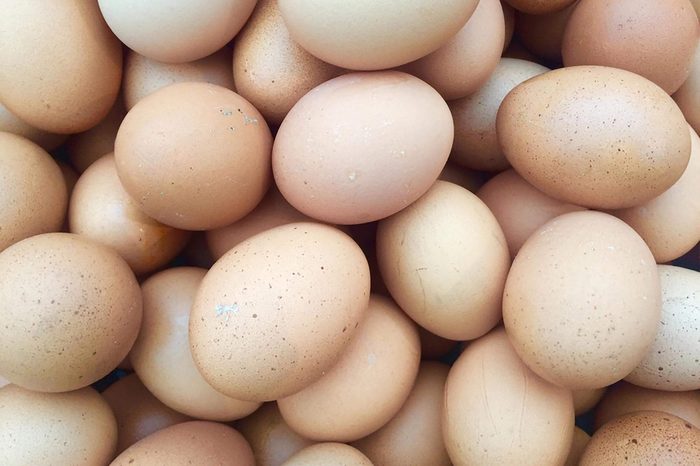
Hard boiled egg
Don’t let Pinterest fool you: If you try to hard boil eggs in your microwave, you’re likely to either end up with a big mess or burned fingers! The rapid heat from the microwaves creates a lot of steam in the egg, which has nowhere to escape. Exploded egg is hard to clean up—trust us.
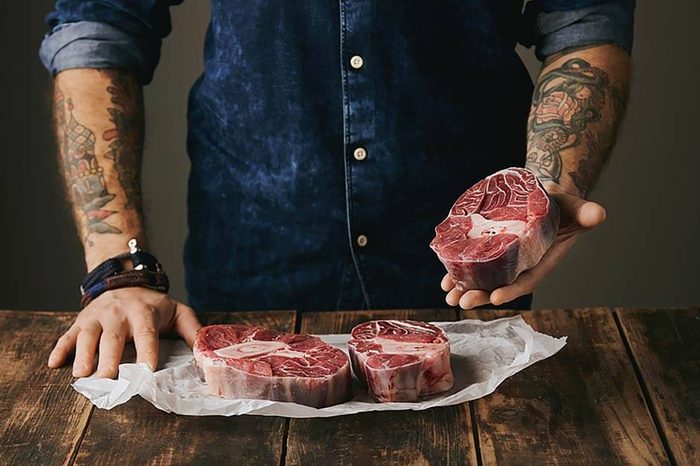
Meat
Frozen cuts of meat are tricky to defrost in a microwave: Thinner edges start cooking while the thicker middle remains frozen. And if your microwave doesn’t rotate food while cooking it, this too can lead to uneven distribution of heat, which can can allow bacteria to grow. The safest way to thaw meat is to defrost it overnight in your refrigerator, according to the Government of Canada.
Knowing microwave mistakes is crucial—especially when it involves meat. Just make sure you’re aware of these grilling mistakes as well.
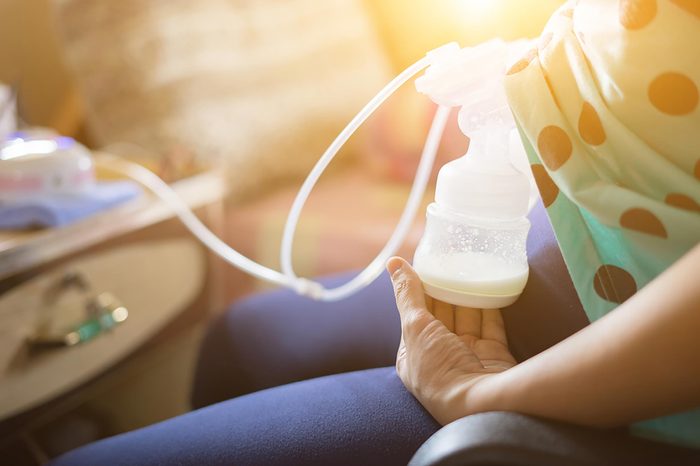
Breast milk
Not only does microwaving frozen breast milk warm it unevenly, which can create scalding hot spots for sensitive little mouths, other research has found that this heating method may destroy some of breast milk’s immune-boosting proteins, particularly on high power. A better bet: Nuke a mug of water, then place a bottle of breast milk in the mug to come to room temperature.
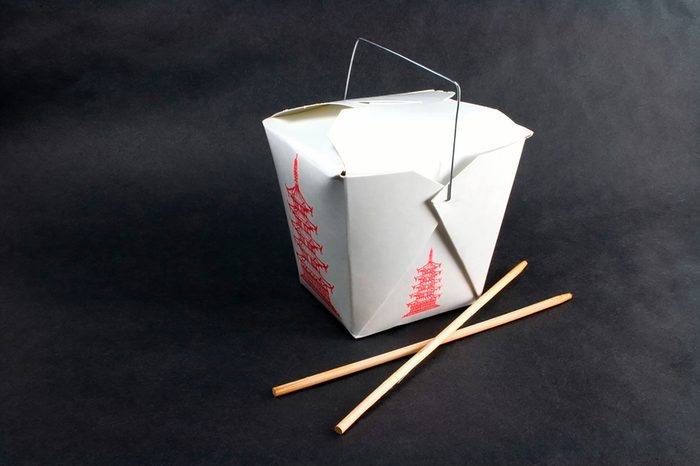
Chinese takeout container
Metal (even small amounts of metal, like the handles on those white containers) and microwaves don’t mix. Or, more accurately, when they mix, they can start fires. Put the rice in a bowl to warm it up. Avoid other fire hazards and check out these healthy kitchen tools chefs swear by.
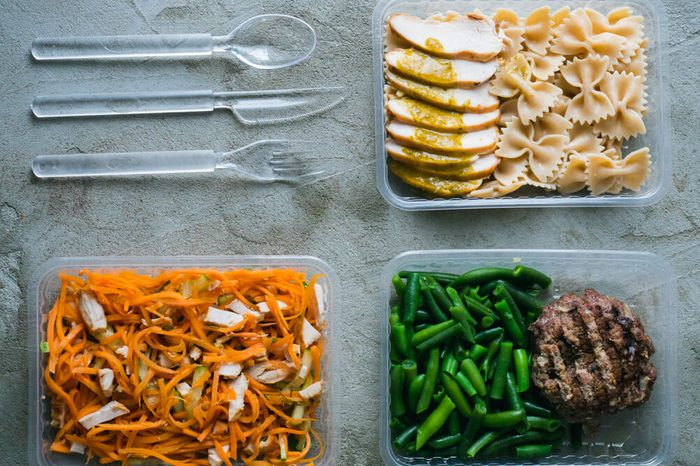
Plastic container
You know you shouldn’t pop plastic leftover containers in there, but you still do. Here’s why that’s bad: Many plastics contain estrogen-like chemicals (BPA is a well-known one) that can leach into your food when the plastic is heated. In a study published in Environmental Health Perspectives, 95 percent of 450 plastic products (such as baby bottles, zipper-top bags and containers) tested released chemicals that acted like estrogen after they were microwaved, washed in a dishwasher, or soaked in water. Even products labeled “BPA-free” released estrogen-like chemicals. Better to be safe and warm up your dinner directly on a plate.
Hesitant about using plastic anyways? Here are 50 facts that will encourage you remove all plastic from your life.
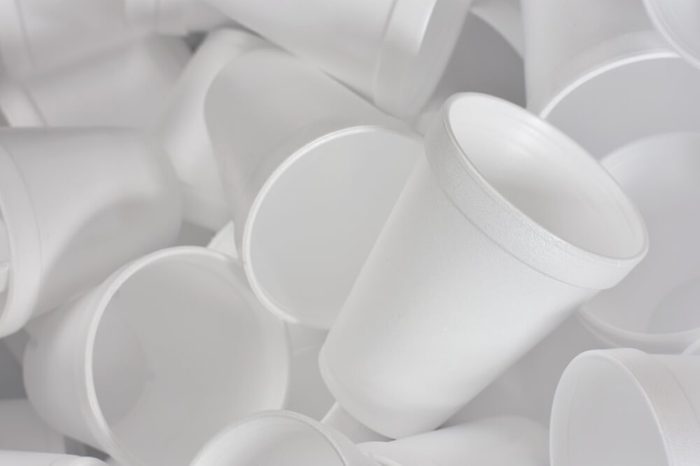
Styrofoam container
As a type of plastic, styrofoam can release harmful chemicals into your food when heated. Dump the leftovers onto a glass dish covered with a paper towel instead. This is one of the other kitchen mistakes you probably still unknowingly make.
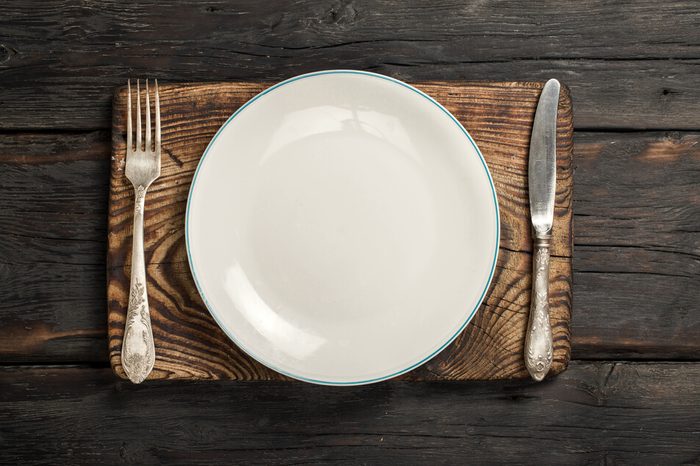
Certain plate
Do you have a lot of fancy China or metallic-trimmed bowls? Keep them far from the microwave. Even if the metallic trimming is minuscule, it may still react in the microwave, according to the USDA. If you use the microwave a lot, it’s best to invest in a plain coloured glass plate for microwave use only.
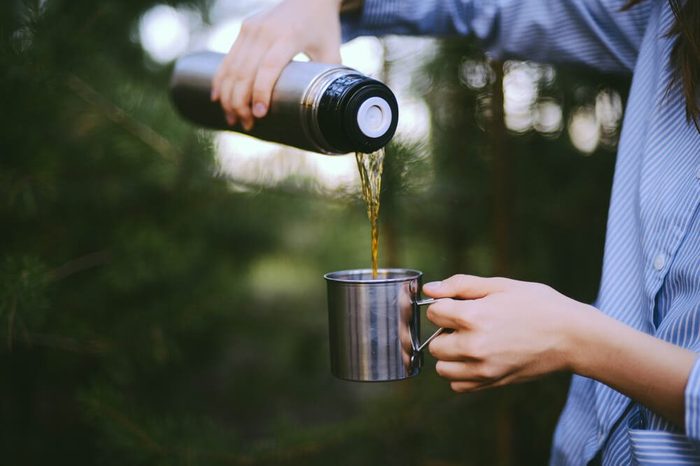
Travel mug
Stainless steel mugs block the heat from warming your coffee or tea and can damage your microwave. If it’s plastic, check the bottom of the mug to see if it’s marked as microwave safe—but even if it is, you may want to reconsider.
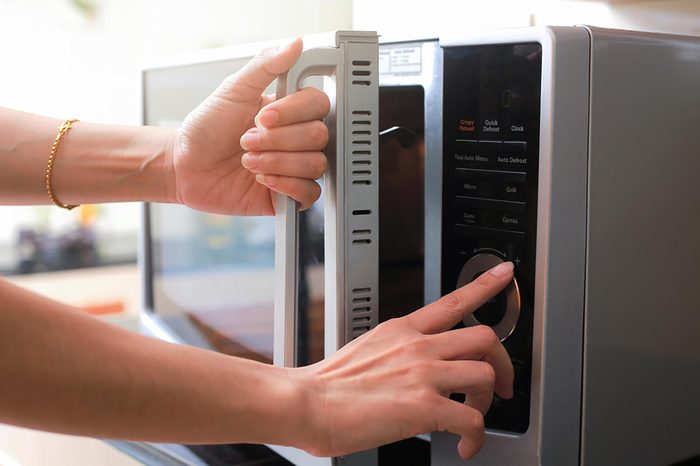
Nothing
With no food or liquid to absorb, the magnetron (which is what makes the microwave function) ends up absorbing the microwaves instead, which can damage your microwave and even start a fire. Make sure you don’t accidentally press “start” without food or drink inside.
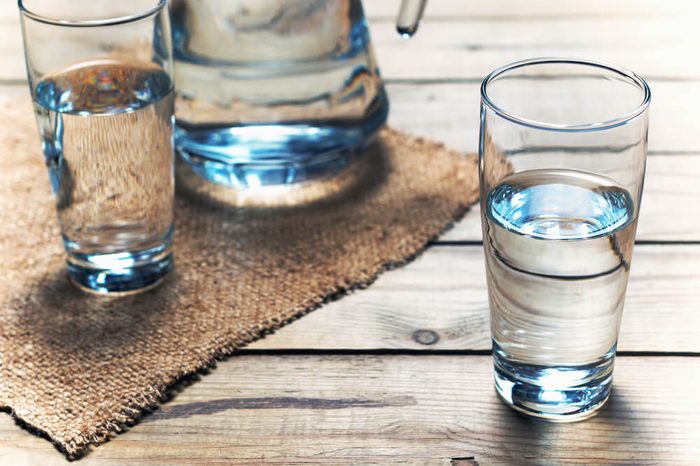
Cup of water
When plain water is heated in a microwave in a ceramic or glass container for too long, it can prevent bubbles from forming, which usually help cool the liquid down. The water becomes superheated; when you move the cup, the heat releases violently and erupts boiling water. To avoid this scalding risk, heat water only the minimum amount of time needed or heat it for longer in small cycles.
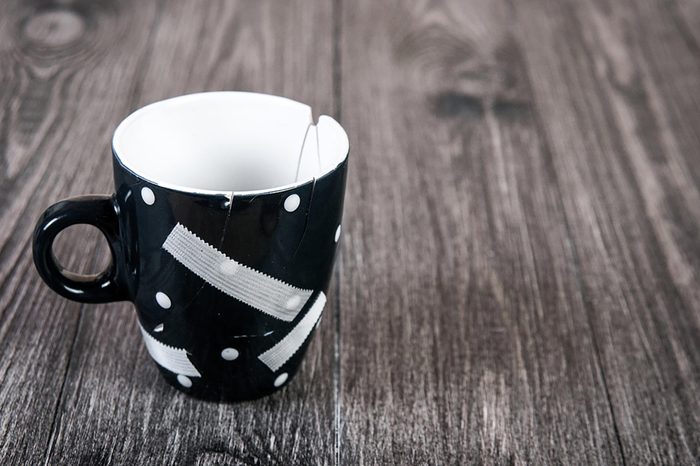
That mug you’ve had for years and years
Certain mugs made before the 1960s, like old versions of Fiestaware, were glazed with materials that could give off radiation and may contain lead and other harmful heavy metals, according to Smithsonian.com. That mug you found at your neighbour’s garage sale may look cute, but consider adding it to your shelf collection instead of drinking from it.
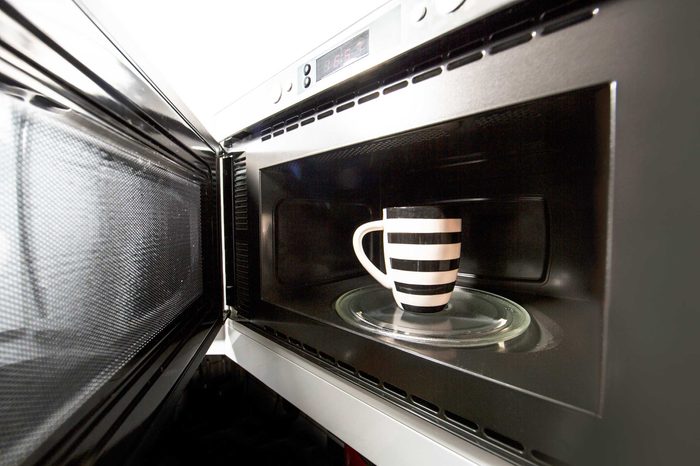
Beware of “microwave safe” labels
The only thing a “microwave safe” label tells you is that you can microwave the container without damaging it or damaging the microwave. In fact, manufacturers aren’t even required to test their ceramics to ensure safety after heating, according to the FDA (that’s probably why you’ve burned yourself on too-hot ceramic mugs). Even though something may say it’s safe to nuke, if you’ve never used it before, consider heating your liquid or food on the stove and then transfer it to a bowl, plate, or mug.
Now that you know how to avoid the most common microwave mistakes, read up on the most germ-infested things you touch every day.
